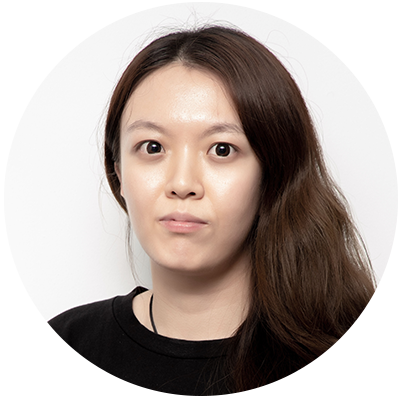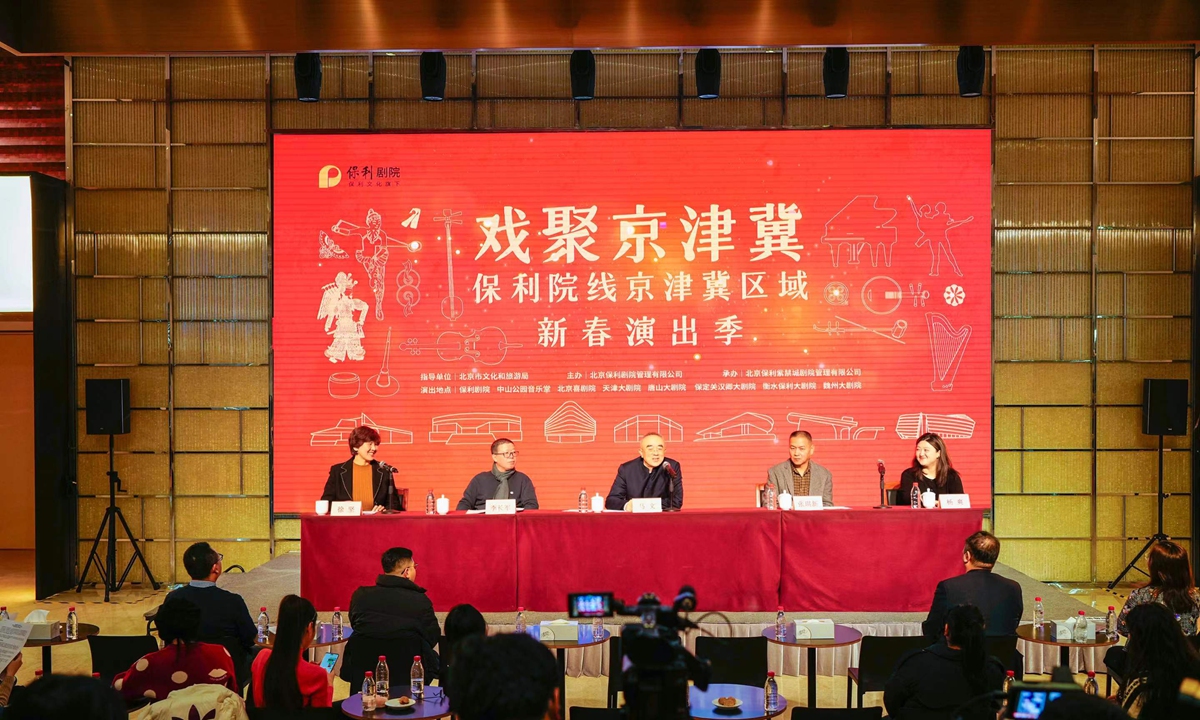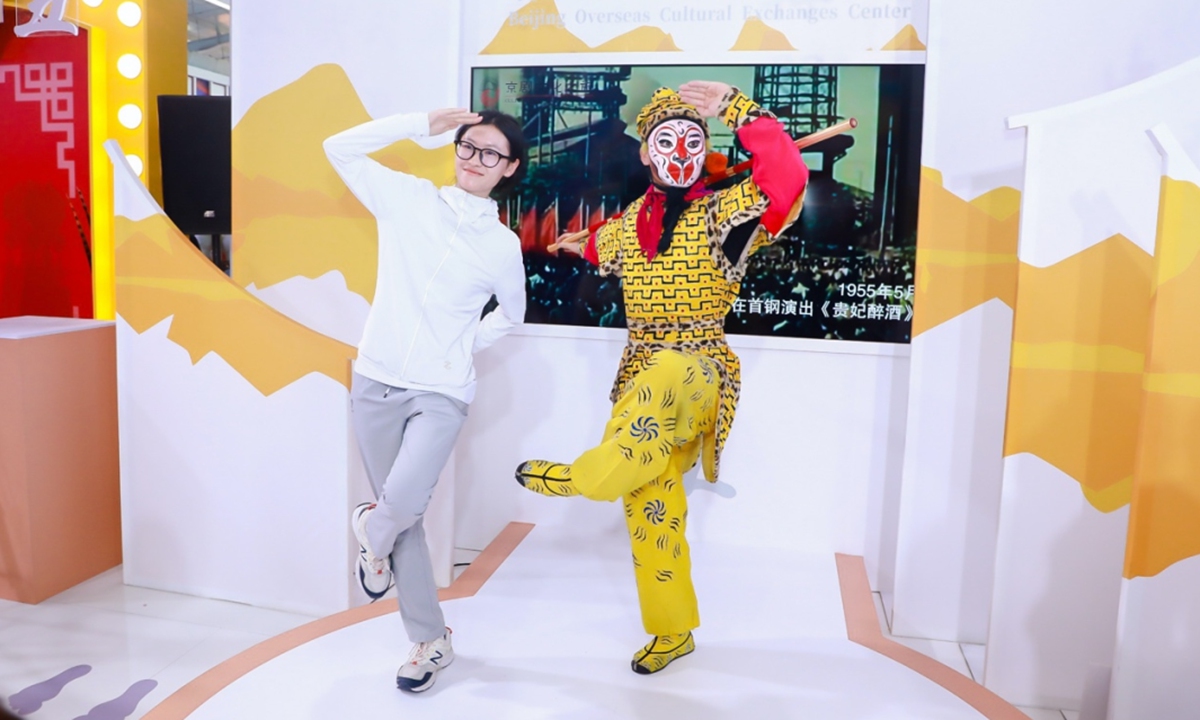ARTS / THEATER
Discover the hidden legacy of Peking Opera along Beijing’s Central Axis
Voicing centuries of treasure
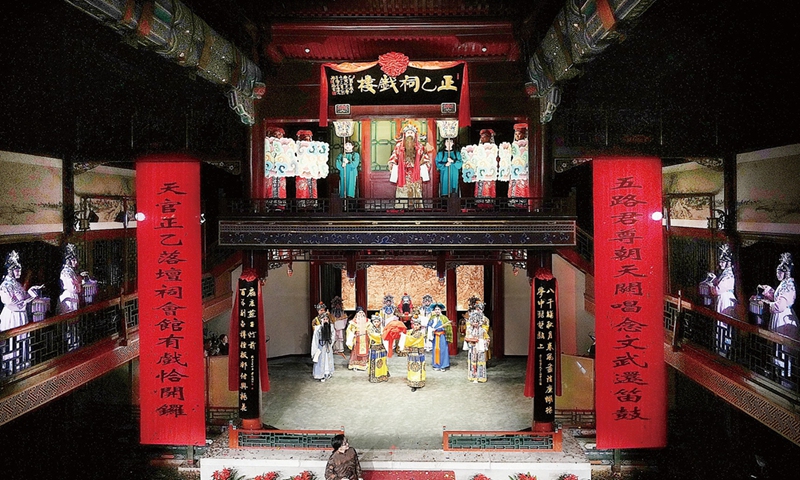
Peking Opera, one of China's most iconic traditional performance arts. Photo: VCG
On a warm Saturday afternoon, the bustling tourist area around Qianmen Street in Beijing - one of the iconic spots along the Central Axis - buzzes with visitors from around the world, all drawn to its vibrant Beijing-style atmosphere. However, very few are aware that by venturing westward along the narrow, winding alleys known as hutong, they can embark on a journey to discover the roots and allure of Peking Opera.The masters' footprints
Peking Opera, one of China's most iconic traditional performance arts, combines speech, singing, mime, and acrobatics accompanied by classical Chinese music to tell compelling stories. The hutongs extending to the west along the Beijing Central Axis witnessed the birth and thriving of the mixed performance art since the Qing Dynasty (1644-1911).
Under the guidance of Dou Junjie, a veteran tour guide working along the Beijing Central Axis, I explored the hutongs and discovered some interesting locations such as the house of Mei Lanfang's grandfather (one of Chinese modern theater's most famous Peking Opera stars, Mei Lanfang was the first to spread the art form abroad) and the former residence of another Peking Opera master, Tan Xinpei, who is the only actor featured in China's earliest film Dingjun Mountain in 1905.
From an outsider's point of view, the two residences seem so ordinary that they are easily overlooked among the surrounding traditional Beijing courtyard dwellings. However, Dou noted that the stories of the two Peking Opera masters are profoundly intertwined with these architectural gems.
In 1790, four drama troupes from East China's Anhui Province arrived at the capital to perform for the imperial court in celebration of the 80th birthday of Qianlong emperor of the Qing Dynasty. This was the first time that regional theater had been performed in the imperial court. Since then, the troupes often performed together, and their unique style became mainstream in cities like Beijing, sparking the creation of the Peking Opera.
Peking Opera consists of four main roles: Sheng (male roles), Dan (female roles), Jing (painted face, usually male roles), and Chou (clown roles). Each role has specific characteristics and performs distinct movements, gestures, and vocal styles. Female roles could also be performed by male actors, and master Mei in particular achieved great success as a Dan actor.
Standing at the gate of his grandfather's residence, Dou shared that Mei's early experiences in opera were challenging, with his teacher discouraging him from continuing. Nonetheless, Mei persevered, diligently honing his performance skills, and drawing inspiration from various other genres of traditional Chinese opera. Ultimately, he developed his own unique style, which was named after his family name.
As I listened to the master's stories, I could imagine the beautiful melodies sung by a young Mei, accompanied by traditional Chinese instruments, drifting in from the other side of the gate.
Centuries of youthfulness
Turning south from Xinhua Street onto Qianmen Xiheyan Street and walking for less than 500 meters, you will find two stone lions guarding a mansion on the right side. This is the Zhengyi Temple Theater, which is deeply connected to the Peking Opera. Generations of Peking Opera masters, including Mei, Tan, and Cheng Changgeng, have graced this stage with their performances.
People always say that the Zhengyi Temple Theater, with a history of more than 300 years, is the first, oldest, and best-preserved indoor theater in China entirely constructed of wood.
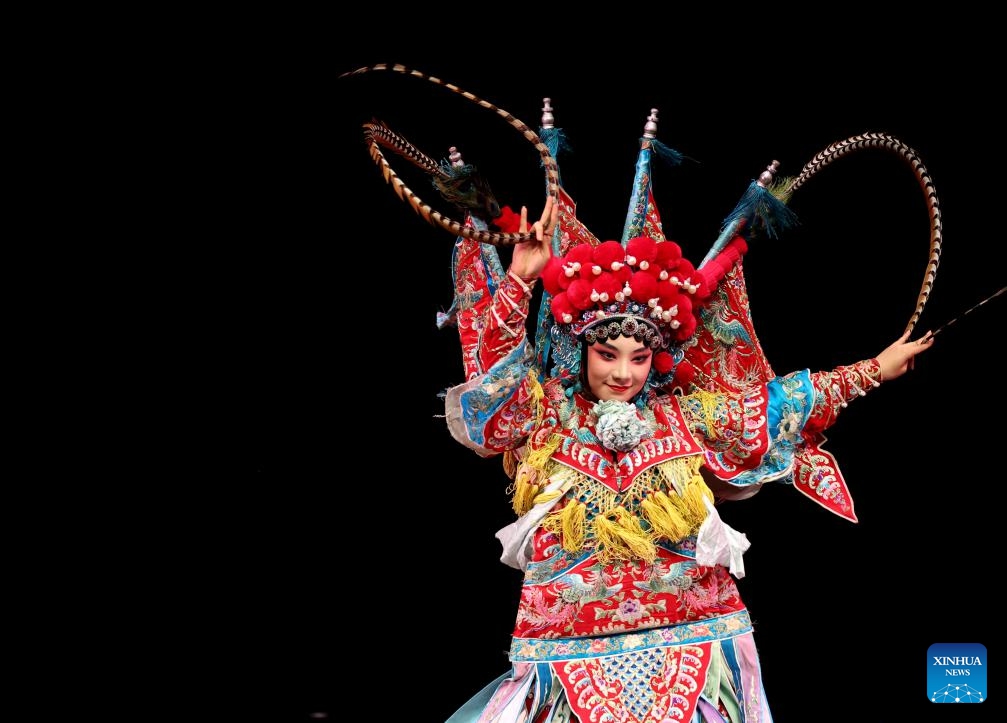
A Peking Opera artist from China performs during a gala evening titled "The Spirit of the Great Wall," in London, Britain, Aug. 19, 2024. (Photo: Xinhua)
As I pushed open the door to the central hall, I stepped inside and noticed the light dimmed. Ahead of me, a two-story theater stage blended seamlessly with the hall. Sunlight filtered through the window panes on either side, casting a warm glow on the stage.After centuries of development, the stage not only pays tribute to traditional performance rituals and restores the traditional opera stage hall's "full immersion" performance experience, but also incorporates modern high-tech methods into its stage technology to enhance auditory and visual effects. The high-quality performances blending ancient operas with modern art forms maintain the vibrancy of the three-century-old theater.
The Huguang Guild Hall, located in the southwest of Hufang Bridge in the Xicheng district of Beijing, has been one of the most popular theaters for Peking Opera in the capital's history. The theater building was once known as one of the top 10 wooden theater buildings in the world.
During our visit to the Beijing Traditional Opera Museum in the Huguang Guild Hall, Liu Zhen, a Peking Opera performer, explained the mature and thriving state of Peking Opera.
The multimedia project "Peking Opera Goes Digital" provides a fascinating journey through the history of Peking Opera in the museum, allowing visitors to explore the inception and beauty of traditional culture. Additionally, a digital map in the exhibition enables visitors to discover the locations of main opera troupes and famous actors' residences in Beijing.
Here, I reconnected with Tan, Mei and other Peking Opera performers through their voices, costumes, and also the photos preserved over time, offering me a glimpse into the rich cultural heritage of the Peking Opera. During my visit, I also witnessed many young people immersing themselves in the beauty of Chinese culture, a fact that has the potential to breathe new life into this ancient art form.
